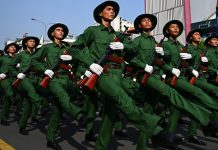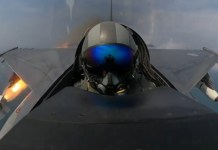India marks 4 December as Navy Day to commemorate the Indian Navy’s attack on the Karachi port during the 1971 war. In a ferocious attack in Pakistani waters, the Indian Navy sank two enemy ships and destroyed another in a raid. A merchant ship carrying ammunition was also sunk.
What Lies Ahead For India & China As Donald Trump’s Loyalist Take Control Of The Pentagon?
Admiral Sardarilal Mathradas Nanda, who was the Chief of the Naval Staff at the time, had led the attack with advanced planning. Two months before the onslaught, in October 1971, Nanda had met then-Prime Minister Indira Gandhi to inform her about the Navy’s preparedness.

An essay in BBC Hindi says that as part of the meeting, Nanda had sought Gandhi’s views if the Navy’s attack on Karachi would have any political implications. Nanda informed her that in 1965, the Navy faced several problems because they were not allowed to carry out any operations outside India’s waters.
Gandhi didn’t answer the question directly, but said, “Well admiral, if there is a war, there is a war”. A year before the war, Nanda had said in an interview that in case of war, he would take it to Pakistan’s biggest port in Karachi. Since the admiral had spent his childhood in Karachi, he claimed he knew the port very well.
In 1971, India had decided to side with East Pakistan (now Bangladesh) in its quest for independence. India provided military support to the East Pakistanis in their war against Pakistan; hence it’s also known as the Bangladesh Liberation war.
Plan Sealed In An Envelope
On 1 December 1971, Admiral Nanda had sealed the fate of Pakistan in an envelope when he ordered an attack on Karachi. Rehan Faizal writes in BBC, saying that the fleet had left Mumbai on 2 December and as per the plan, the warships were supposed to stay near Karachi in the diameter of 250km and make it 150km by the evening.
On 3 December, after the sneak attacks launched by the Pakistan Air Force, Indira Gandhi addressed the nation and said: “Some hours ago, soon after 5.30 pm on December 3, Pakistan launched a full-scale war against us”. An emergency was declared for the whole of India.
As per the plan, the warships had reached 150km outside Karachi. In spite of the opposition from within the Indian Navy, the attack was carried out with Russia’s Osa-Class missile boat. The first attack took place on the night of 4 December when INS Nirghat detected the movement and fired one of its missiles at the ship. The missile destroyed the Pakistani warship, PNS Khaibar.
Karachi Port. All credit to Indian Navy. #OperationTrident #NavyDay pic.twitter.com/aJffYIVWJE
— Indian Army Aficionado (@EnemySlayer24_7) December 4, 2020
The second missile boat INS Nipat had fired at two ships: one of the targets was a merchant ship MV Venus Challenger and the other was a destroyer PNS Shah Jahan. Meanwhile, the third missile boat INS Veer engaged a warship using a single missile to sink what was later identified as PNS Muhafiz, a minesweeper of the Pakistan Navy. This was called ‘Operation Trident’.
With this, the missile boats turned their sight towards Karachi. This time, the missile boat Vinash had gone with frigates Trishul and Talwar. Lt. commander Vijay Jerath was leading the charge. In the same BBC report, Jerath recalls that he had fired the last missile on Kiamari oil fields. He said: The moment operation ended, I sent the message “Four pigeons happy in the nest”, and its reply came, “we have never seen a Diwali like this”.
He said it can be described as scary but the whole sky was afire and it was not a calming scenario.
The 90-minute operation had resulted in Pakistan losing a minesweeper, a destroyer, a cargo vessel carrying ammunition, and fuel storage tanks in Karachi. Following this assault, the Karachi harbor was rendered non-operational due to the severe damages caused by the Indian assault.




